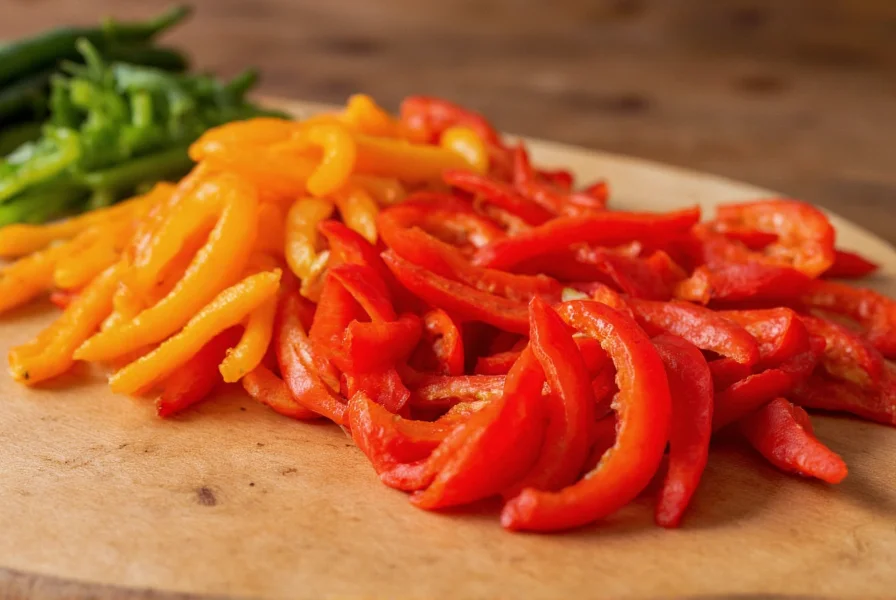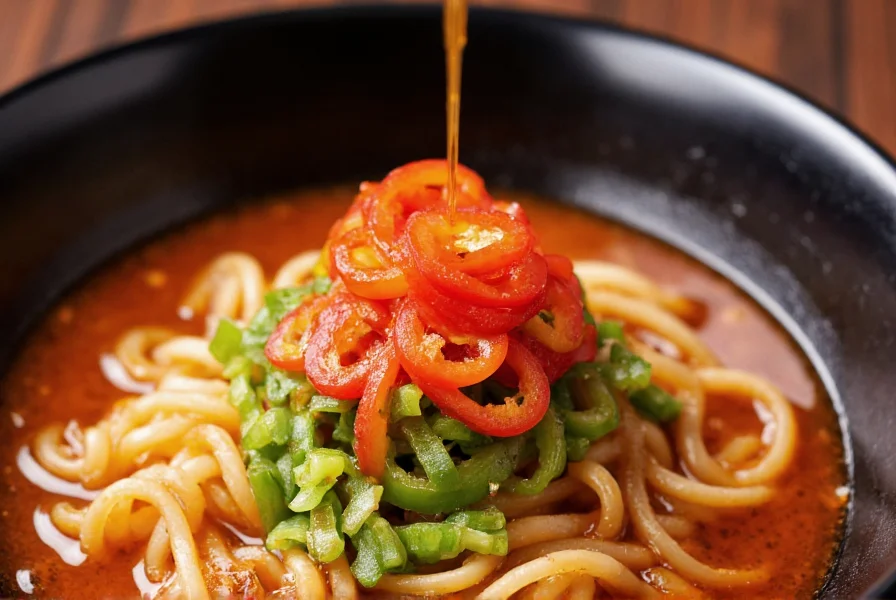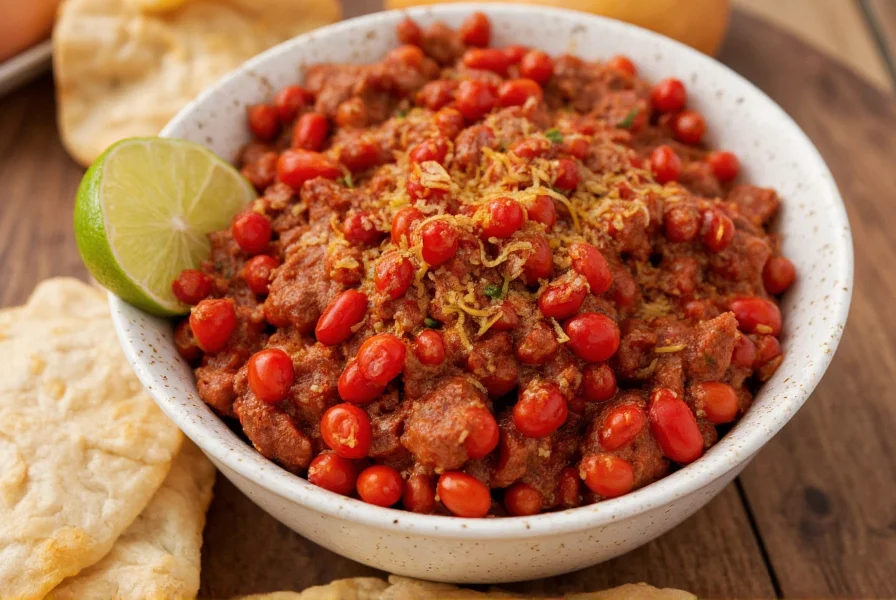Adding chili on top transforms ordinary dishes into extraordinary culinary experiences through strategic heat application. Unlike incorporating chili during cooking, finishing with fresh or prepared chili preserves volatile capsaicin compounds that provide nuanced heat profiles. This technique works across global cuisines, from Mexican street food to Asian noodle dishes and Mediterranean platters.
Types of Chilies for Topping Applications
Selecting the right chili variety determines your dish's final character. Fresh chilies offer bright, grassy notes while dried versions provide deeper, smokier dimensions. Understanding each type's Scoville heat units (SHU) and flavor profile ensures perfect pairing with your main ingredients.
| Chili Variety | Heat Level (SHU) | Flavor Profile | Best Pairings |
|---|---|---|---|
| Fresno | 2,500-10,000 | Bright, slightly sweet | Tacos, grilled fish, avocado toast |
| Jalapeño | 2,500-8,000 | Grassy, vegetal | Nachos, burgers, bean dishes |
| Serrano | 10,000-23,000 | Sharp, clean heat | Salsas, ceviche, rice bowls |
| Thai Bird's Eye | 50,000-100,000 | Intense, floral | Curries, stir-fries, noodle dishes |
| Shishito | 50-200 | Peppery, mild | Grilled vegetables, salads, pasta |
Preparation Methods for Optimal Flavor
How you prepare chili toppings significantly impacts their final contribution to your dish. Different techniques extract varying flavor compounds while controlling heat intensity.
Fresh chili preparation delivers immediate vibrancy. Thinly slice or julienne peppers for even distribution. For milder heat, remove seeds and white membranes where capsaicin concentration is highest. Let cut chilies rest 10-15 minutes before serving to allow enzymatic reactions that develop complex flavor compounds.
Dried chili applications require rehydration or toasting. Reconstitute dried chilies in warm water for 20 minutes, then slice or blend into finishing sauces. Alternatively, dry-toast whole chilies in a skillet until fragrant, then crush for sprinkle toppings that add smoky depth to soups and stews.

Strategic Pairing Principles
Effective chili topping placement follows culinary chemistry principles. Acidic dishes like ceviche or tomato-based sauces benefit from fresh green chilies that complement bright flavors. Rich, fatty foods like carnitas or avocado dishes pair perfectly with medium-heat red chilies that cut through richness.
Consider these pairing guidelines when deciding which chili on top works best:
- Fat-rich dishes (carnitas, cheese, avocado): Use medium-heat red chilies like guajillo or ancho
- Acidic preparations (ceviche, tomato sauces): Pair with fresh green chilies like serrano or jalapeño
- Delicate proteins (fish, chicken): Opt for mild varieties like poblano or Anaheim
- Starchy bases (rice, potatoes, beans): Complement with medium-heat chilies like cayenne or fresno
Signature Recipe Applications
Implementing chili on top elevates simple dishes into restaurant-quality creations. These practical applications demonstrate professional techniques you can replicate at home.
Chili-Infused Finishing Oil provides controlled heat distribution. Combine 1 cup neutral oil with 3-4 dried arbol chilies in a cold saucepan. Heat gradually to 180°F (82°C), maintaining temperature for 15 minutes without boiling. Strain and cool. Drizzle over finished dishes for even heat distribution without textural interruption.
Quick-Pickled Chili Topping balances heat with acidity. Slice 2 jalapeños thinly and combine with ½ cup rice vinegar, 2 tbsp sugar, and 1 tsp salt. Let sit at room temperature for 30 minutes. The resulting topping adds bright heat to tacos, sandwiches, and grain bowls while maintaining crisp texture.

Storage and Preservation Techniques
Proper storage maintains chili topping quality. Fresh sliced chilies keep 3-4 days in airtight containers lined with damp paper towels. For longer preservation, freeze whole chilies on a baking sheet before transferring to freezer bags - they'll remain usable for 6 months.
Chili oils and infused vinegars maintain quality for 4-6 weeks when stored in dark glass containers away from heat sources. Always use clean utensils when handling preserved chilies to prevent bacterial contamination that accelerates spoilage.
Frequently Asked Questions
What's the difference between using fresh versus dried chili on top?
Fresh chilies provide immediate, bright heat with grassy notes that complement light dishes, while dried chilies offer deeper, smokier flavors ideal for rich preparations. Fresh chilies deliver more volatile aromatic compounds, whereas dried versions concentrate capsaicin and develop complex flavor profiles through the drying process.
How can I reduce the heat of chili toppings without losing flavor?
Remove seeds and white membranes where most capsaicin concentrates. Soak sliced chilies in milk or buttermilk for 10 minutes to neutralize surface heat while preserving flavor compounds. Alternatively, pair spicy chilies with acidic elements like lime juice which counterbalances perceived heat through sensory interaction.
Which chili varieties work best for sensitive palates?
Shishito and padrón peppers (mostly mild with occasional spicy ones) provide gentle heat. Poblano and Anaheim chilies offer subtle warmth without overwhelming spice. For completely mild options, use sweet banana peppers or pimientos which provide chili flavor without significant heat.
Can I use chili powder instead of fresh chili on top?
While chili powder works in some applications, it lacks the textural contrast and fresh aroma of whole or sliced chilies. For finishing, use smoked paprika or specialty chili flakes like Aleppo pepper which provide controlled heat distribution. Fresh chilies remain superior for visual appeal and aromatic complexity in topping applications.











 浙公网安备
33010002000092号
浙公网安备
33010002000092号 浙B2-20120091-4
浙B2-20120091-4